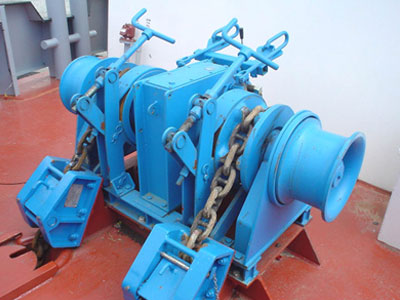How To Choosing Windlass
To Select The Proper Windlass For Your Ship, Three Questions Should Be Answered.
1. What size windlass would best suit my boat?
If youhave a 10m (33 ft) boat, typically a 270kg (600 lb) pull windlass would be selected. The rule to crosscheck your windlass selection is to add the total weight of the chain and the weight of the anchor together. Rope is very light and does not affect the actual lifting performance of the windlass, but can be factored in. For safe cruising in all types of conditions and sea areas, HI-SEA recommends that you multiply the total weight of your anchor and chain by 4. This number should be less than the maximum pull of the windlass you have selected. Should your findings be at or more than the maximum pull, select the next largest windlass. The windlass does not stow the anchor rode in the locker. Gravity stows the rode in the locker. There must be a free and clear area under the hawse pipe for the incoming rode to lie; if not the rode will jam. Your windlass is a retrieval device; the windlass retrieves the anchor and rode. A windlass is not a high load bearing device. When at anchor your rode should be secured to a cleat or other mooring point on the bow.
2. How long is the anchor rode you wish to use and will it fit into your locker?
Begin by examining the depth of the anchor locker to determine the amount of 'fall' available. The fall is the vertical distance between the top of the anchor locker and the top of the anchor rode when it is completely stored inside the locker. This measurement is important in determining whether your boat will be best suited for a vertical or horizontal windlass.
3. How much pulling power should my windlass have?
Having selected a vertical or horizontal windlass and determined the size required for your boat length and displacement, the correct windlass pulling power for your needs must be determined using the following formula:
Total weight of ground tackle (anchor and rode) X 4
=
Pulling power required by the windlass



